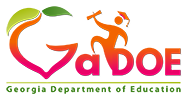Many students with disabilities require assistive technology to participate in and benefit from their educational programs. A range of technology solutions is available to support student performance, achievement, and independence in the following areas: academics and learning aids, aids to daily living, assistive listening and environmental aids for the hearing impaired and deaf, augmentative communication, computer access, leisure and recreation, seating, positioning, mobility, and vision. Students who have access to the appropriate assistive technology solutions that they need are more likely to be successful in their educational programs.
This page provides introductory information on the range of assistive technology solutions that are available to support access to the school curriculum and student achievement for students with disabilities. This listing of devices does not include all assistive technology devices within a device category and inclusion of a device does not constitute endorsement by the Georgia Project for Assistive Technology or the Georgia Department of Education.
Technology Areas
Academic and Learning Aids: Many students with disabilities use assistive technology to enhance their participation and achievement in their educational programs. There are a range of assistive technology solutions to address student needs in all academic areas including reading, writing and spelling, math, and study and organization.
Aids to Daily Living: Many students with disabilities use assistive technology to enhance their participation and achievement in their educational programs. There are a range of assistive technology solutions to address student needs in all academic areas including reading, writing and spelling, math, and study and organization.
Assisted Living Devices and Environmental Aids: Students who are hard of hearing or deaf often need assistive technology to access information that is typically presented verbally and accessed through the auditory modality. A variety of technology solutions are available that amplify speech and other auditory signals or that provide an alternative to the auditory modality. These include assistive listening devices that amplify sound and speech both in the classroom and home environment, text telephone (TTY), closed captioning devices, real time captioning, and environmental aids that support independent living skills.
Augmentative Communication: Students with severe expressive communication impairments have difficulty communicating with peers and adults within their environments. Many of these students need a means of supplementing their communication skills. These students frequently use augmentative communication technology. A range of low technology to high technology solutions are available including: object based communication displays, picture communication boards and books, talking switches, voice output communication devices and computer based communication devices.
Computer Access and Instruction: A variety of technology solutions are available to adapt the classroom computer for students with disabilities. Some computer access technology offers a method of input other than the standard computer keyboard and mouse. Other computer adaptations include software and hardware that modifies the visual and sound output from the computer. A variety of devices are available and include the following: adaptive pointing devices, keyboard adaptations, alternative
Environmental Control: High technology environmental aids are available to assist students with physical disabilities in controlling electronic appliances within the school and home. These devices allow the student to use an alternate input device such as a switch to control one or more electronic appliances such as lights, televisions, and electronically controlled doors.
Mobility Aids: Students with physical disabilities often need access to mobility aids to provide them with a means of moving about their environments. Mobility aids include canes, crutches, walkers, scooters, and wheelchairs. Generally, assistive technology devices such as the mobility aids referenced above are recommended by physical and occupational therapists based on the student’s individual needs.
Oral Communication and the AAC: Assistive Technology in the field of Oral Communication can include a variety of areas to assist individuals with speech or language difficulties.
Pre-Vocational and Vocational Aids: Students with physical and cognitive disabilities who are enrolled in educational programs that address pre-vocational and vocational skills may benefit from the use of pre-vocational and vocational aids. These types of technology solutions include modifications of the tools and manipulatives used in the completion of work related tasks. Low technology solutions include grips for handling materials and stabilization devices for supporting work materials. For students using electronic appliances such as staplers and paper shredders, an environmental control unit such as the model available from AbleNet can be used to allow for switch control of the appliance. Many of the adaptations required for participation in work activities may be teacher constructed. For example, a picture-based task schedule can be created to represent all of the steps in a particular activity for students with intellectual disabilities.
Recreation and Leisure: Some students with physical, sensory, and intellectual disabilities require assistive technology in order to participate more fully in appropriate recreation and leisure activities. A range of low technology to high technology solutions are available including game adaptations, book adaptations, switch adapted toys, and environmental control access for televisions, videos, tape players, CD players and MP3 players.
Seating and Postioning: Students with physical disabilities often require adaptive seating and positioning systems as an alternative to the standard classroom seating systems. Adaptive seating and positioning systems include seat inserts for wheelchairs, side liers, prone standers, and adaptive chairs. These seating and positioning systems are generally determined by the physical and occupational therapist in consultation with the classroom staff. Sammons Preston offers several different seating and positioning devices for the classroom.
Visual Aids: Students with visual impairments can benefit from assistive technology in a variety of areas. A critical need for assistive technology is often in the area of accessing printed information and to providing a means of producing written communication. There are many visual aids including talking dictionaries, adapted tape player/recorders, large print and talking calculators, braille writers, closed circuit televisions (CCTV), and software such as screen reading and text enlargement programs.
For an extensive database of assistive technology solutions across technology areas, the reader is referred to:

